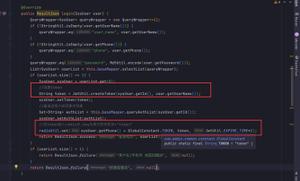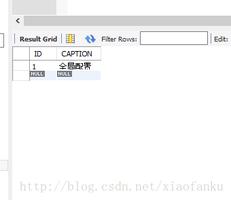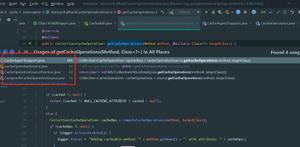Spring Bean定义的三种方式
本文内容纲要:
- 一、基于XML的配置- 二、基于注解的配置
- 三、基于Java类的配置
<!--Spring容器启动配置(web.xml文件)-->
<context-param>
<param-name>contextConfigLocation</param-name>
<param-value>classpath:spring/applicationContext.xml</param-value>
</context-param>
<listener>
<listener-class>org.springframework.web.context.ContextLoaderListener</listener-class>
</listener>
一、基于XML的配置
适用场景:
Bean实现类来自第三方类库,如:DataSource等
需要命名空间配置,如:context,aop,mvc等
//导入其他配置文件Bean的定义
二、基于注解的配置
适用场景:
- 项目中自己开发使用的类,如controller、service、dao等
步骤如下:
1. 在applicationContext.xml配置扫描包路径
<context:component-scan base-package="com.lovepi.spring"> <context:include-filter type="regex" expression="com.lovepi.spring.*"/> //包含的目标类
<context:exclude-filter type="aspectj" expression="cn.lovepi..*Controller+"/> //排除的目标类
</context:component-scan>
注:context:component-scan/ 其实已经包含了 context:annotation-config/的功能
2. 使用注解声明bean
Spring提供了四个注解,这些注解的作用与上面的XML定义bean效果一致,在于将组件交给Spring容器管理。组件的名称默认是类名(首字母变小写),可以自己修改:
@Component:当对组件的层次难以定位的时候使用这个注解
@Controller:表示控制层的组件
@Service:表示业务逻辑层的组件
@Repository:表示数据访问层的组件
@Service
public class SysUserService {
@Resourceprivate SysUserMapper sysUserMapper;
public int insertSelective(SysUser record){
return sysUserMapper.insertSelective(record);
}
}
三、基于Java类的配置
适用场景:
- 需要通过代码控制对象创建逻辑的场景
- 实现零配置,消除xml配置文件
步骤如下:
使用@Configuration注解需要作为配置的类,表示该类将定义Bean的元数据
使用@Bean注解相应的方法,该方法名默认就是Bean的名称,该方法返回值就是Bean的对象。
AnnotationConfigApplicationContext或子类进行加载基于java类的配置
@Configuration
public class BeansConfiguration {
@Beanpublic Student student(){
Student student=new Student();
student.setName("张三");
student.setTeacher(teacher());
return student;
}
@Bean
public Teacher teacher(){
Teacher teacher=new Teacher();
teacher.setName("李四");
return teacher;
}
}
public class Main {
public static void main(String args[]){AnnotationConfigApplicationContext context = new AnnotationConfigApplicationContext(BeansConfiguration.class);
Student student = (Student) context.getBean("student");
Teacher teacher = (Teacher) context.getBean("teacher");
System.out.println("学生的姓名:" + student.getName() + "。老师是" + student.getTeacher().getName());
System.out.println("老师的姓名:" + teacher.getName());
}
}
参考:https://blog.csdn.net/lzh657083979/article/details/78524489
本文内容总结:一、基于XML的配置,二、基于注解的配置,三、基于Java类的配置,
原文链接:https://www.cnblogs.com/wslook/p/9161560.html
以上是 Spring Bean定义的三种方式 的全部内容, 来源链接: utcz.com/z/362331.html








